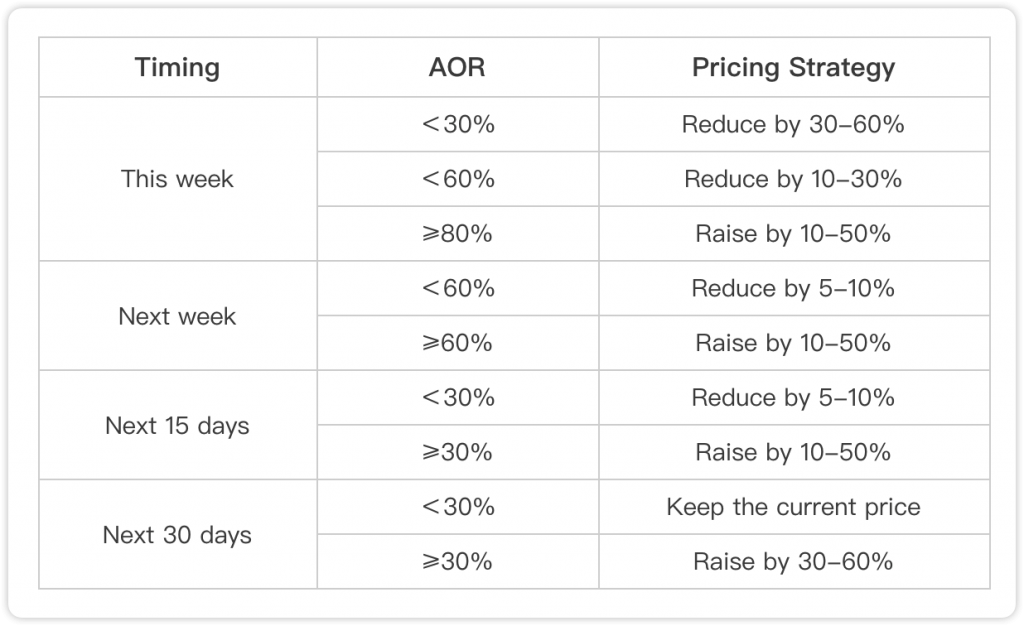Short-term rentals can often generate more revenue than long-term leases and offer flexibility for hosts. However, success depends heavily on your pricing. Without the right short-term rental pricing strategy, you risk undercharging or scaring away potential guests.
Pricing isn’t just about numbers—it’s about positioning your property in the market. In this article, we’ll explore how to price your vacation rental effectively. You’ll learn practical techniques and proven strategies to stay competitive and profitable.
By the way, Hostex makes pricing even easier. You can sync rates across all OTA channels, adjust prices in bulk, apply custom pricing rules, and even integrate smart dynamic pricing tools. All of this, plus a full-featured PMS, starts at just $4.9/month.

Proper Strategies for Short-Term Rental Pricing
Short-term rental pricing follows the same core logic as most markets: the price is shaped by supply and demand.
But setting your rates at the market average doesn’t guarantee bookings. To maximize revenue, you need to understand what actually drives your pricing power and how to adjust accordingly.
1. Understand Market Demand
Demand is the single most important factor that affects your rental income. But demand isn’t static. It shifts with the season, local events, weather, and even booking lead time.
To respond effectively, you need to:
- Track occupancy trends in your area using Airbnb, Booking.com, or dynamic pricing tools.
- Analyze competitor listings to see how they adjust pricing during weekends, holidays, and off-seasons.
- Leverage real-time booking data to understand which nights or periods guests are most likely to book.
That is to say, pricing should reflect both what your guests are willing to pay and how urgently they need a place to stay. During high-demand periods, you can charge a premium. In slow seasons, however, flexibility is key.
2. Know Your Target Guests
Short-term rental pricing should also match the expectations of your ideal guest. Are you targeting families, budget travelers, or luxury vacationers? Each segment values different things and responds to pricing differently.
For example:
- Price-sensitive travelers look for value. They compare listings and often book based on price alone.
- Luxury guests prioritize quality and uniqueness over discounts. For them, premium features and glowing reviews justify higher rates.
- Business travelers value convenience, flexibility, and availability. Dynamic weekday pricing may help here.
If you’re unsure about your ideal guest profile, look at similar listings nearby. Read their reviews, check their prices, and see what kind of guests they attract. This can help shape your pricing and your listing tone.
3. Factor in Your Costs
Many hosts forget to calculate their real expenses when setting prices. This leads to underpricing, lost revenue, or even negative margins.
Make sure to account for:
- Startup costs: Furnishing, renovation, and appliances.
- Operational expenses: Cleaning, maintenance, consumables, insurance.
- Platform fees: Airbnb or VRBO commissions can take up 15% or more.
- Labor or time costs: Your time managing listings, guests, and turnover also carries value.
That’s why relying solely on competitors’ prices isn’t enough. Your pricing must cover your unique costs while staying competitive.
4. Avoid Common Pricing Mistakes
Many new hosts unknowingly limit their earnings with outdated or rigid pricing habits. Watch out for these common pitfalls:
- Keeping the same price for months at a time
- Ignoring seasonality and local events
- Failing to adjust prices for weekends or holidays
- Using the same rates across all booking platforms
- Avoiding discounts during low seasons due to fear of loss
In other words, inflexible pricing = missed revenue.
Anyone can make these mistakes, but if you want to maximize your short-term rental income, you need to be able to realize the problem faster, find the causes and solutions, and not repeat the same mistakes.
Some hosts don’t adjust pricing simply because it’s tedious, especially if they manage multiple listings across several OTAs. That’s where automation tools can help. Dynamic pricing engines and channel managers like Hostex allow you to bulk-edit prices, sync calendars, and apply smart pricing rules effortlessly.

Best Pricing Method for Vacation Rentals
Dynamic pricing—long used in the airline and hotel industries—is also highly effective for short-term rental pricing. It allows hosts to respond to real-time shifts in demand and maximize revenue across different booking periods.
Short-Term Rental Dynamic Pricing
This strategy is rooted in the concept of price discrimination. For instance, business travelers often book flights closer to the travel date and care more about flexibility than price. Leisure travelers, on the other hand, tend to book earlier and are more price-sensitive. Airlines charge accordingly.
The same logic applies to short-term rentals:
- Closer to weekends and holidays, availability drops as demand rises.
- Last-minute bookings are more urgent and typically less price-sensitive.
- Early-booking guests may be more cost-conscious and plan around deals.
Therefore, prices should increase as the check-in date approaches, especially during high-demand periods.

A Practical Approach to Dynamic Pricing
Implementing dynamic pricing may sound complex, but it can be broken down into simple steps:
1. Start with your breakeven point.
Analyze your past bookings and determine the minimum occupancy rate you need to cover costs. For example, if your break-even occupancy is 60%, use this as your baseline.
2. Monitor your booking pace.
Compare your current occupancy against expected targets for different future dates. If your listing is underbooked for a weekend two weeks away, consider lowering prices to attract more bookings. If you’re almost fully booked, you can safely raise rates.
3. Adjust prices based on lead time.
Here’s a simple framework:
- Low occupancy + far from check-in: Slight price drop to boost visibility.
- Moderate occupancy + approaching date: Maintain or slightly raise price.
- High occupancy + near check-in: Increase price confidently.
4. Refine using historical data.
Over time, you’ll identify demand trends unique to your listing, like spikes around local events or holidays. Use this insight to preemptively adjust rates in future seasons.

Efficient Short-Term Rental Pricing Tools
Dynamic pricing is a simple yet powerful strategy. But for many hosts, a common challenge arises: “If prices need to change frequently, do I have to update them manually every day across multiple platforms?”
The short answer is — not anymore.
Manually adjusting prices for multiple listings across various OTA channels would be nearly impossible. However, with the right tools, this process becomes seamless.
Hostex, an all-in-one short-term rental property management system, allows you to update prices across platforms in just one click. You can modify prices in bulk based on your needs, including:
- Selecting multiple listings or room types
- Applying changes across specific dates or holidays
- Setting different prices for different OTA channels using pricing ratios
- Adjusting by fixed amounts or percentage changes

In addition, Hostex integrates with third-party dynamic pricing tools like PriceLabs and Rategenie. These integrations enable intelligent pricing adjustments based on real-time market data, helping you maximize revenue without manual effort.
With tools like Hostex, smart short-term rental pricing becomes easy, scalable, and far more profitable.

Final Thoughts
Pricing your short-term rental isn’t just about covering costs or copying competitors. It’s a strategic process that blends data, guest behavior, market trends, and operational goals. A smart pricing strategy can significantly boost your occupancy rate and overall revenue.
By understanding your market, identifying your ideal guests, applying dynamic pricing methods, and using the right tools like Hostex, you can stay ahead of the competition without spending hours on manual adjustments.
In the world of vacation rentals, those who price with precision will always outperform those who guess.




Reading your article helped me a lot and I agree with you. But I still have some doubts, can you clarify for me? I’ll keep an eye out for your answers.
Hi, there! I’m so glad to have a talk with you.
Thanks for sharing. I read many of your blog posts, cool, your blog is very good.
I absolutely loved this blog! It really captured the essence of the topic and provided some invaluable insights.
Practical tips
Well-written
Engaging content!